
The Tallinn Wave
July sees the Estonian capital host the Tallinn Biennial (and more)
July in Tallinn is a truly wonderful and event-packed month. The city is filled with the aroma of linden trees in bloom, and there is a play of light and shade on every step. Meanwhile, residents of the city take to the streets, embracing all sorts of entertainment in the street with abandon, releasing the pent-up energy accumulated during the time they were forced to spend stuck at home. 1 July, the exact date of official lift of ban on public events that was enforced throughout the lockdown period, saw the launch of the Tallinn Biennial, running in the Estonian capital through 30 July. Although the inaugural edition of the biennial, it is nevertheless an expanded ‒ not least temporally ‒ successor of the Tallinn Art Week (TAW), which first took place in 2016. Like TAW, the biennial is hosted by Nordic Baltic Art Centre (NOBA), and the project is headed by Andra Orn and Kelli Turmann. We met them both in the district of Ülemiste City, a genuine Tallinn techno-hub, where one of the former industrial hangars is serving as the main venue of the project.
‘Initially, of course, we intended to hold the biennial in a physical space, then, when the lockdown happened, we decided to do a virtual version, only to reconsider it later and go back to ‘reality’ again. We did not, however, manage to realize all of our ideas, particularly ones with international context, but luckily other Estonian art institutions, our partners, stepped in, and we ended up with quite an event-packed and multi-layered programme,’ says Kelli Turmann. ‘We see a great potential in a whole string of Baltic biennials ‒ in Riga, Helsinki and now also in Tallinn ‒ taking place simultaneously. It is an excellent opportunity for art lovers to go on a sort of art tour of a whole region. Our biennial was born from the Tallinn Art Week, but you cannot, of course, compare a week with a whole month. A longer project can be visited by so much more people,’ adds Andra Orn.
Exhibition view. Edward von Lõngus. «Doomsday Cathedral»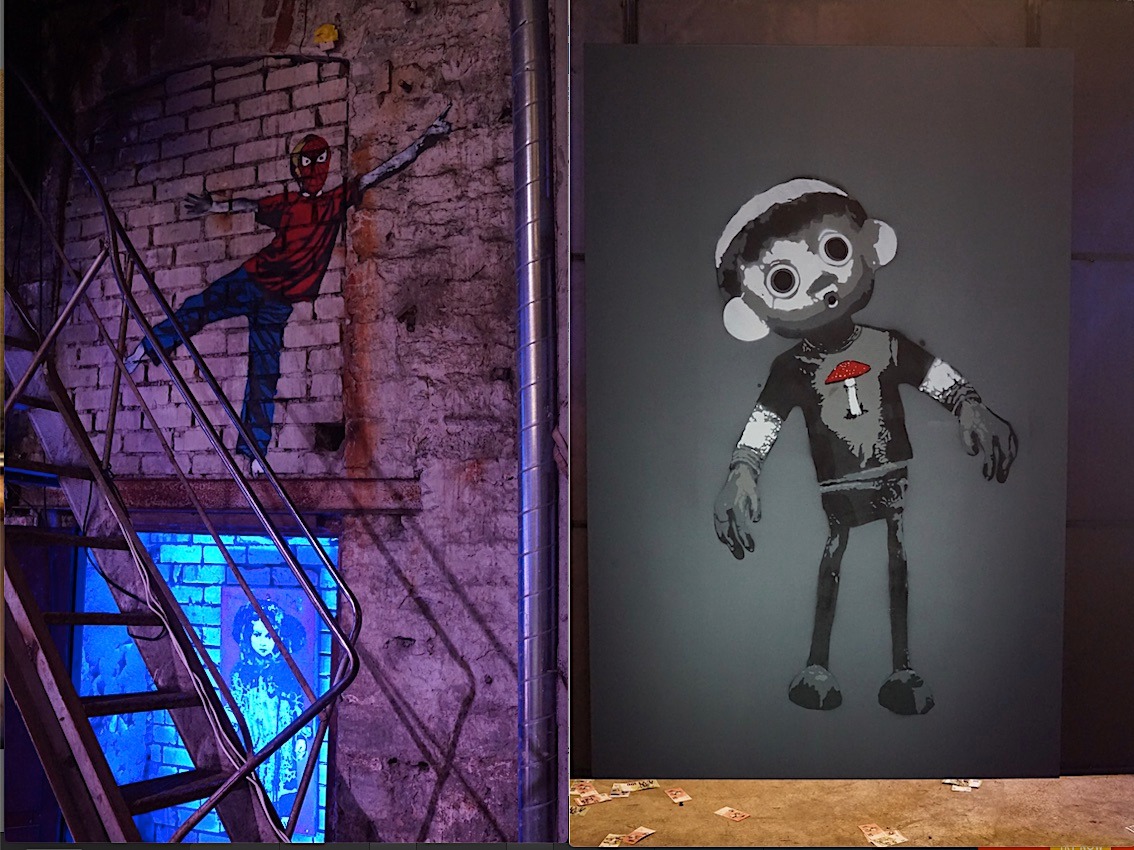
They both believe that the aim of the biennial is to ‘invite to an encounter with art as many people as possible, a wider audience that perhaps is not used to visiting art galleries on a regular basis’. A whole string of exhibitions have opened during the project; the media-friendly format of the biennial helped them attract extra attention. There were meetings with artists at their studios and ateliers; there was a huge show in Freedom Square and a specially organised bicycle tour of art galleries. The biennial also ventured outside the borders of the city: its programme featured a reopening of a private art museum located in the seaside village of Viinistu north of Tallinn. This village boasting a population of 174 is home to one of the largest private collections of Estonian painting, from the Baltic Germans and Pallas Art School to contemporary artists. It is owned by Jaan Manitski, a Viinistu-born businessman and politician. He left his native land with his parents as a child, grew up and lived in Sweden and successfully made a career as the business manager of the Swedish super stars ABBA. After the disintegration of the Soviet Union he repatriated to Estonia and is now doing everything he can to incite interest in his native country.
Exhibition view. Edward von Lõngus. «Doomsday Cathedral»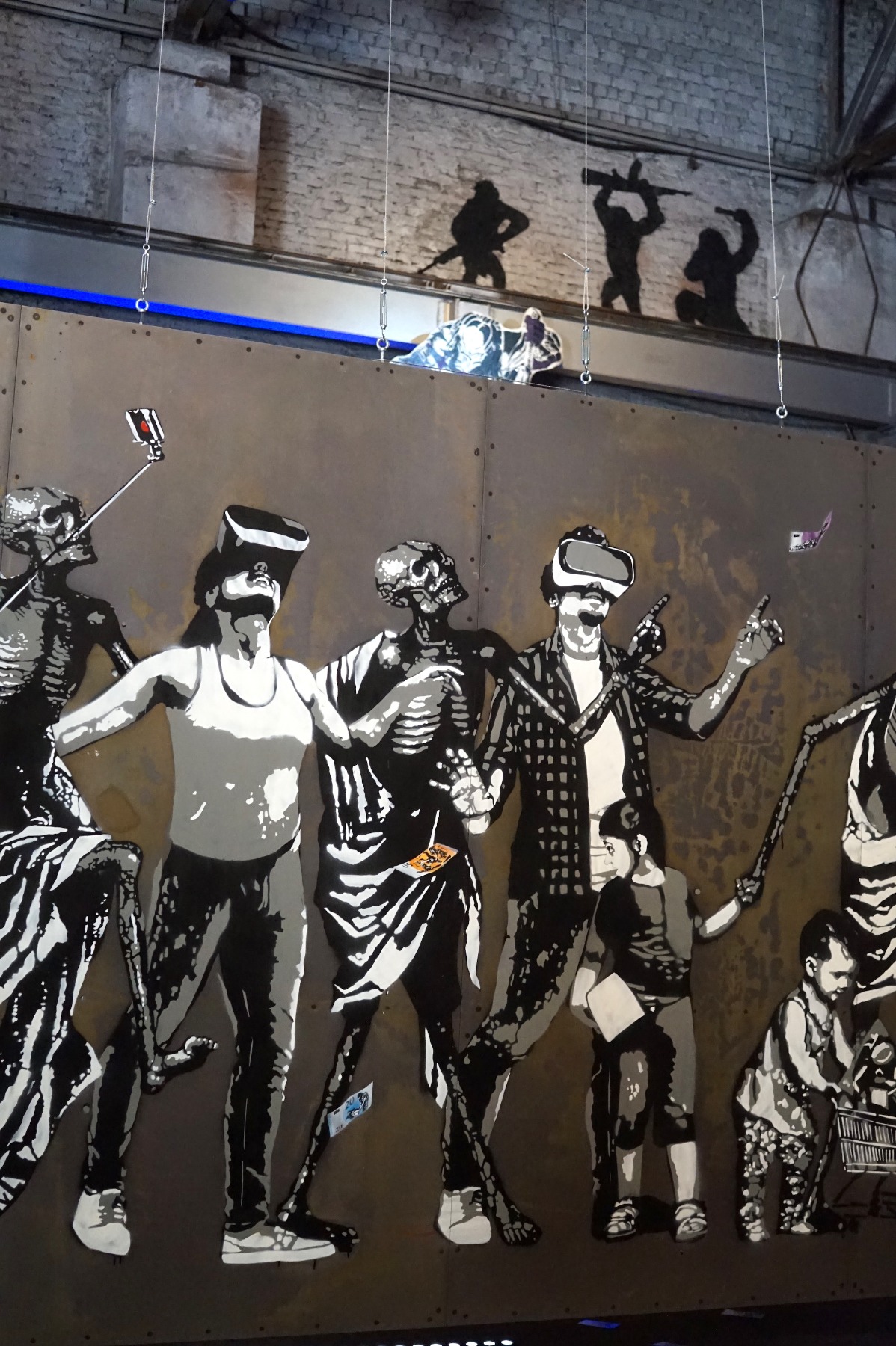
But it was the exhibition of a mysterious street artist from Tartu, Edward von Lõngus, that became the heart and main event of the biennial. Officially very little is known about the person hiding behind this pseudonym. However, he is really much talked about, and not just at home in Estonia. His fame catapulted in 2014 thanks to his stencil art piece Cannabeard and the Witch-Hunter (Kannahabe ja nõiakütt) dealing with the war with cannabis farming. The picture features Mossbeard, a character from the Estonian children’s book Three Jolly Fellows by Eno Raud. It’s just that the beard in this version is made not of moss but of cannabis leaves and his hands are held behind his back by an official officer of law. The graffiti appeared on the façade of a Tartu building located not just anywhere but next to the Supreme Court of Estonia and became a real meme. Another moment that played a significant role in the story of Edward von Lõngus happened in 2018 when, as part of the centenary celebration of Estonian independence, stencil art pieces riffing on the Danse Macabre painting by the late medieval German artist Bernt Notke, captivating the attention of visitors of the Tallinn St Nicholas’ Church for many centuries, appeared in 13 of the major cities of Europe.
Edward von Lõngus. «The Real Fake». 2019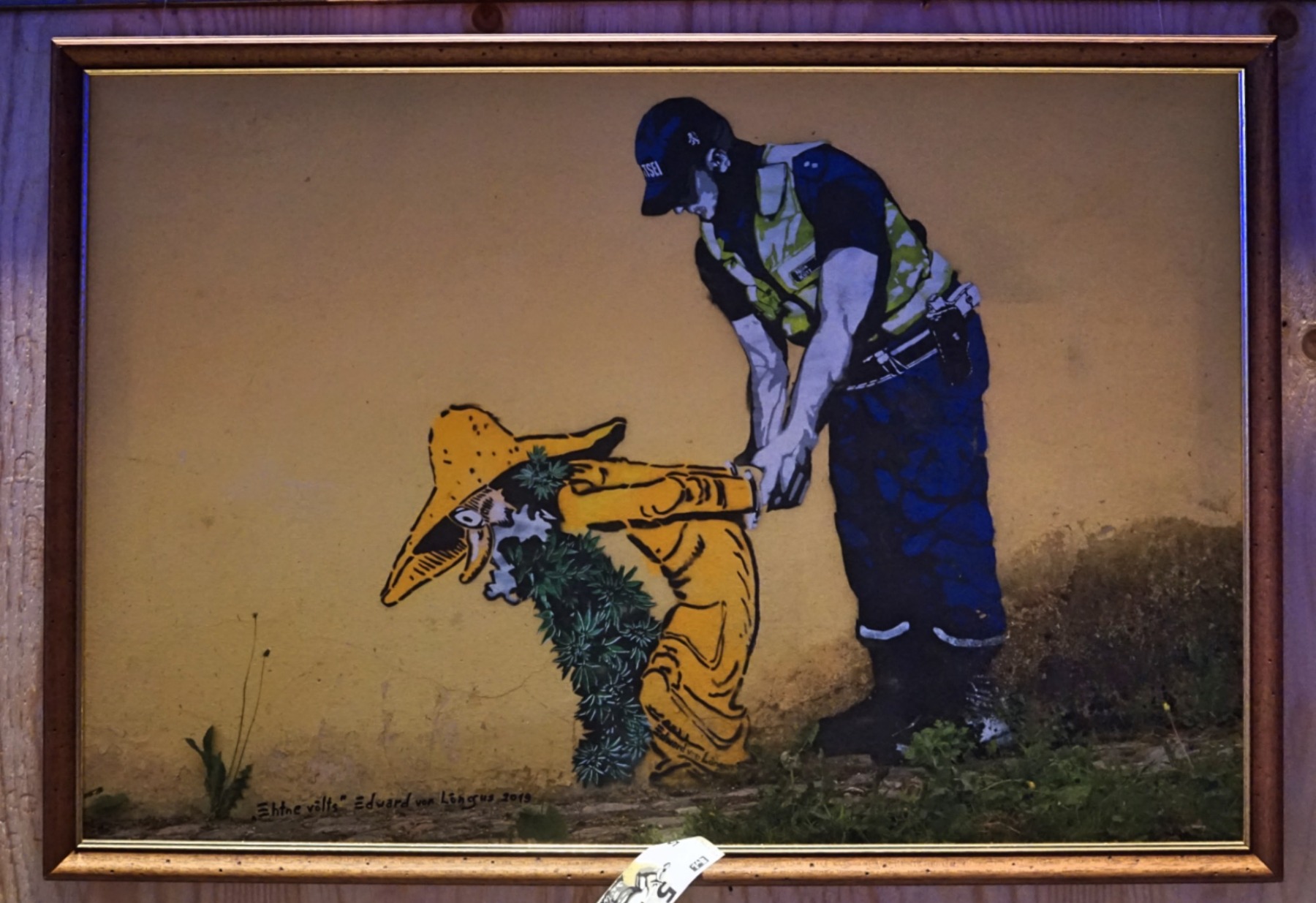

The same motifs and images acquire another format in Edward von Lõngus’ ambitious project commissioned by the Tallinn Biennial, Doomsday Cathedral, housed in the building of a former industrial hangar in Ülemiste; they occupy the centre of the space, painted on 25-metre long steel plates suspended from the ceiling. Both the painted scenes and the visitors are reflected in an equally long wall of mirrors resting on the floor. Other trademark images created by von Lõngus since 2007 have been given a new lease of life on the walls, in window openings and every other possible surface. The notorious twosome from Tartu, the above-mentioned Mossbeard and the policeman, are the ones shown in the manner most untypical for the artist. Von Lõngus purchased a print of his own stencil art on AliExpress, signed it with a flourish and mounted in a frame, entitled The Real Fake. Especially for the Doomsday Church project, Edward von Lõngus also printed his own currency that occasionally rains on the viewers from the ceiling as ‘money falling from the sky’. There is also an interesting appendix to this project ‒ a wall featuring capitalist versions of the Danse Macabre characters has been set up for the duration of the biennial at the Solaris shopping centre in Tallinn, complete with some special money scattered along it. It is not that often that you see artwork criticising consumerism at shopping centres in the Baltic states.
«Abstractions & Drowning», the joint show by the artist Kärt Hammer and jeweller Patrick Soome at the Art Depoo gallery.
Kärt Hammer at her work
However, the show on the whole raises some quite topical questions of how successful can such an en masse presentation of street art be ‒ works created in the street and for the street, where they disrupt our everyday perception of reality, creating a deliberate glitch in the mundane picture. Do they retain their magic presented en masse in an exhibition space that has been especially selected for them? Of course, we are not talking about a white cube gallery here; the venue is a 1899 industrial space where they used to manufacture equipment for nuclear power stations. And yet the level of the sometimes playful yet quite direct and unambiguous critique of the contemporary world order reads as a bit over-the-top in these walls.
But in case anyone feels that way, the biennial also features exhibitions and projects of completely different character. To name but few, Abstractions & Drowning, the joint show by the artist Kärt Hammer and jeweller Patrick Soome, is still open at the Art Depoo gallery. Amidst meditative abstract paintings lining the gallery walls, six pedestals feature special receptacles (pieces of broken glasses filled with epoxy resin and fastened to concrete base) holding jewellery pieces. ‘Glass, silver, epoxy resin, leather, cement. Fragility meets brutality,’ says the press release for the project. It is a special pleasure to tour the show accompanied by the artists. And we were lucky enough to talk to the beautiful and meditative Kärt Hammer, who seemed to be mirroring her own paintings, reserved yet charged with black-and-white energy.
The biennial in general was not trying to economize on opportunities to meet the artists and attend new art conglomerates: The former Polymer factorym ARS Art Factory and NUART BUARNE all had come up with special events of their own. Incidentally, two Latvian artists ‒ Ieva Kraule-Kūna and Elīna Vītola spent a whole week at the ARS Art Factory in early July. They opened their Artist Crisis Centre there, a support platform for artists experiencing existential problems in these trying times.
Alina Bliumis and Tanja Muravskaja. ‘Narrating Against the Grain’ at the Tallinn Art Hall. Exhibition view.
The biennial programme is running through 30 July; on 31 July, the Ülemiste venue is hosting the final Doomsday Party. It should be noted, of course, that the Tallinn art life offers plenty of other artistic highlights in July. On 16 July, a joint exhibition by the well-known Estonian artist focusing on the subject of social relationships Tanja Muravskaja, freshly back from her residency in Brussels, where she was forced to spend the lockdown time, and the Belorussian artist Alina Bliumis opened at the Tallinn Art Hall. Entitled Narrating Against the Grain, it ‘brings together two artists who share the experience of growing up in Soviet Eastern Europe as well as a thematic interest in transcending borderlines, the constructed-ness of national identity, the entanglement of art and politics and the im/mobility of migrants. The global refugee reception crisis as well as the dramatic transformations in Europe during the pandemic have been catalysts for these artists to create artistic narratives that go against the grain and engage with forms of being in-between geographies and the struggle over self.’
Artwork by Kris Lemsalu / exhibition ‘Love Song Sing Along’ at the Kai art centre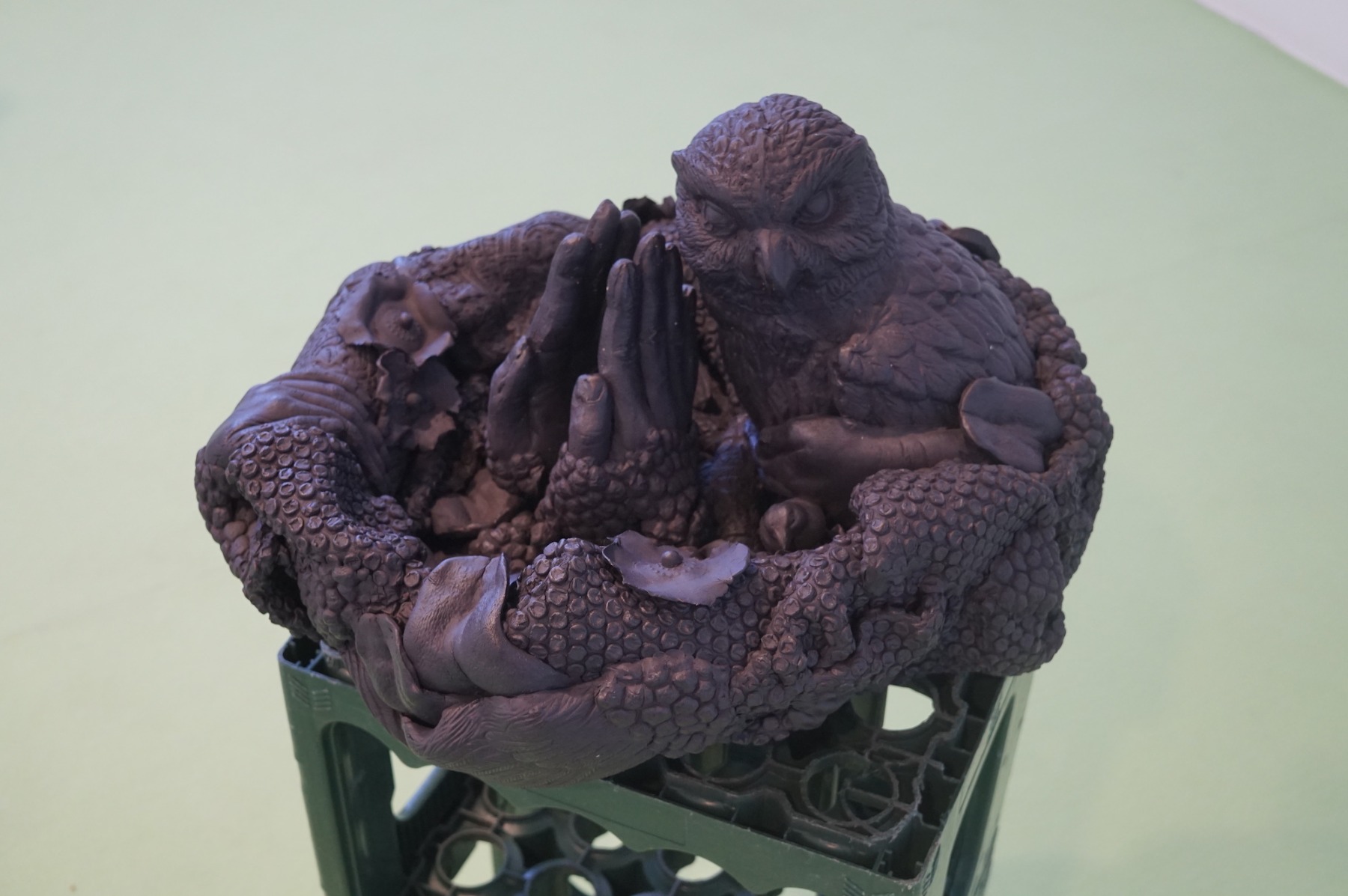
17 July saw the unveiling of a joint exhibition of the Estonian artist Kris Lemsalu, who is known for reinventing the genre and potential of ceramics, and her partner Kyp Malone; it is called ‘Love Song Sing Along (Once Again With Feeling!)’ at the Kai art centre. The project initially opened in early spring at the Berlin KW Institute for Contemporary Art; due to the lockdown, however, it was destined to stay open for a very short time. The show has now been given a new lease of life at the relatively new Tallin art centre facing the seashore. And the exhibition fits the general mood perfectly ‒ this atmosphere of blossoming after a cold and long ‘winter’, a new understanding of how important our relationships are and how much we need each other. The show actually now reads as a take on this story we have lived through together.
View from the exhibition ‘Love Song Sing Along (Once Again With Feeling!)’ at the Kai art centre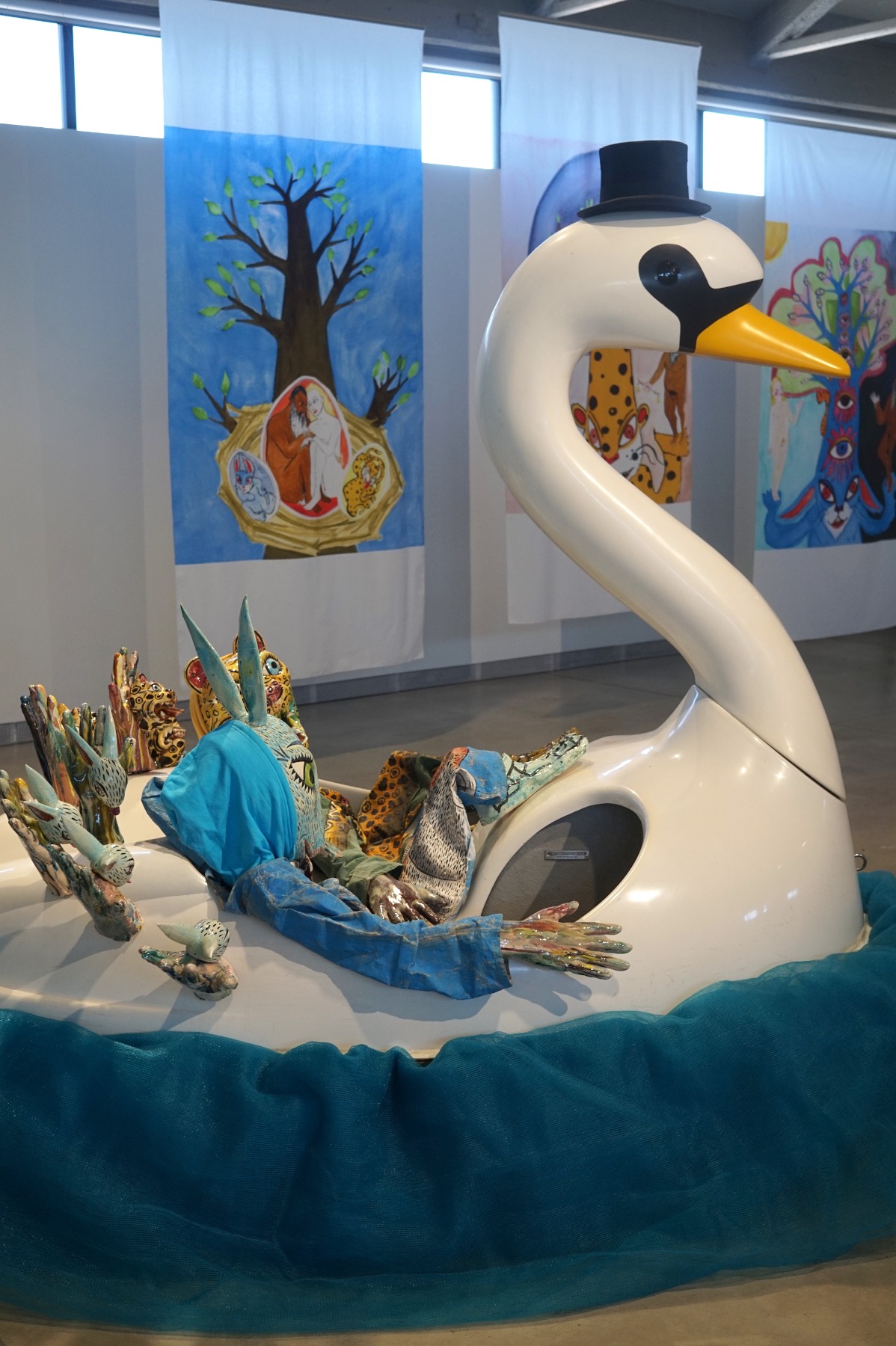
Kaido Ole’s show All Together is running at the Temnikova & Kasela gallery, housed in the same building as Kai, through 16 August: it is a wonderful and deeply personal reading of the 20th-century art history. The KUMU museum presents noteworthy solo exhibitions by two Estonian artists who started their career back in the Soviet era, on the late 1960s – Ando Keskküla and Vello Vinn. You can read what we wrote about Ando Keskküla here; meanwhile, the prints of Vello Vinn are clearly one of the highlights of contemporary Estonian art. The exhibition curated by Elnara Taidre (who has quite frequently contributed to Arterritory.com as a reviewer and a critic) is undoubtedly a success for the museum. Remarkably, to demonstrate the significance of Vello Vinn’s art in the context of Estonian art, his works are shown as if in dialogue with pieces by artists who are actively working right now ‒ musicians and artists Kiwa, printmaker Lilli-Krõõt Repnau and graphic designer Brit Pavelson, the aptly and poetically working photographic artist Krista Mölder and installation artist Kristina Õllek. A piece that merits a special mention is the phantasmagorical object by Kiwa that allows experiencing the time-tested psychedelic art by Vello Vinn in the most captivating and hypnotic manner. (This must-see exhibition is open through 9 August.) Another happy occasion is the reopening of the temporarily closed Contemporary Art Museum of Estonia (EKKM) with an exhibition by Jevgeni Zolotko.
Artwork by Vello Vinn / exhibition ‘Interreflections’ at the KUMU
In all, July in Tallinn has clearly unfolded as an exuberant month, jam-packed with events. Let us wait and see what Riga’s response to that will be in late August and early September when RIBOCA and Survival Kit are both launched. In any case, the viewers are definitely benefiting from this ‘art saturation’ that is migrating between the Baltic capitals ‒ particularly if they are able to plan their summers around it.